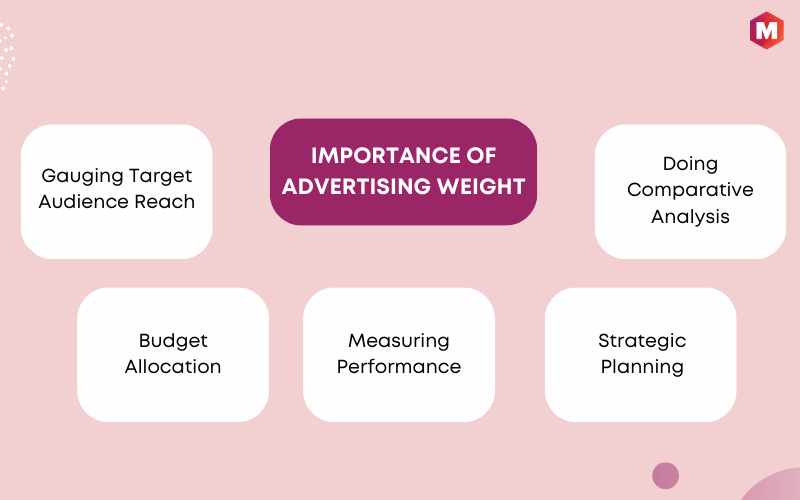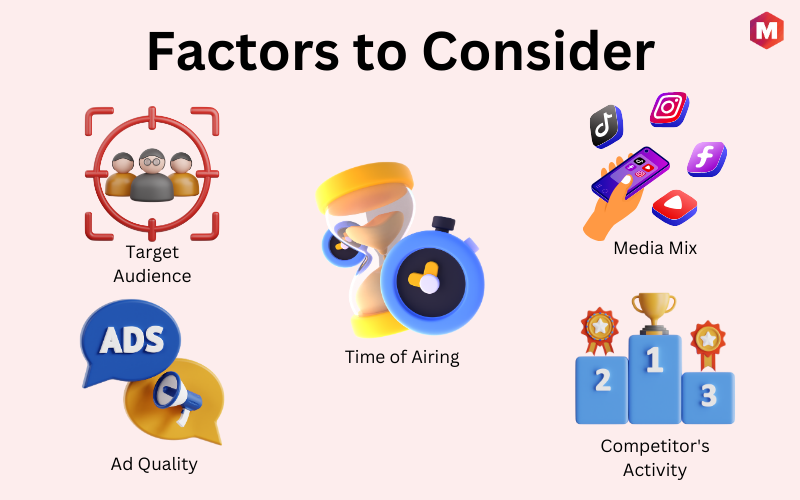Table of Contents
What is Advertising Weight?
Advertising Weight refers to the measure of exposure that a particular ad campaign garners, individually or within a pool of campaigns. This metric is vital to understanding the breadth and depth of a campaign’s reach, whether it’s through television commercials or print advertisements.
In short, advertising weight is a way to quantify the impact of an ad campaign. For instance, a campaign with a higher advertising weight is likely to reach more people than one with a lower advertising weight.
Key Takeaways!
- Advertising Weight is defined as the measure of an ad campaign’s exposure, which evaluates its overall reach and impact.
- It acts as a crucial tool for marketers to calculate the effectiveness of their campaigns.
- This metric can offer valuable insight into the potential outreach of future campaigns based on previous data.
- Advertising weight directly correlates to the audience reach, making it a strategic factor in planning and executing successful advertising campaigns.
Importance of Advertising Weight
The importance of advertising weight cannot be understated in the world of marketing. This metric aids in differentiating high-priority ads from low-priority ads, based on their level of exposure and influence. Some of the reasons behind knowing the weight of an advertising campaign are:
- Gauging Target Audience Reach: High advertising weight ensures that your ads reach a wider section of your target audience.
- Doing Comparative Analysis: It assists in comparing the reach of your ads with other ads in the same pool.
- Budget Allocation: Knowing the advertising weight can help allocate resources efficiently between television commercials and print advertisements.
- Measuring Performance: It serves as a critical performance measure for individual ad campaigns.
- Strategic Planning: Understanding advertising weight can aid in formulating effective marketing strategies.
Usage
In an increasingly competitive marketplace, the correct deployment of advertising weight can be a game changer. It can amplify your brand message, extend your reach, and ultimately drive revenue. Hence, it is essential to understand its correct usage.
- Media Planning: Advertising weight plays a critical role in media planning, helping to decide the frequency and exposure of ad campaigns.
- Budget Allocation: It aids in efficient budget allocation, ensuring the maximum reach for each marketing dollar spent.
- Competitive Analysis: It provides a basis for competitive analysis, comparing your brand’s visibility with competitors.
- Performance Evaluation: It aids in evaluating the performance of different media channels.
- Consumer Engagement: High advertising weight can lead to greater consumer engagement, boosting brand recall and loyalty.
Factors to Consider
When planning an advertisement strategy, it’s crucial to consider several factors that can influence its advertising weight. These factors can determine the overall effectiveness and reach of your ad campaign.
- Target Audience: Your ad’s appeal to its intended audience affects the advertising weight.
- Media Mix: The choice of media platforms influences the reach and frequency of the campaign.
- Ad Quality: The creativeness and relevance of the advertisement can impact its engagement and recall.
- Time of Airing: The timing of the ad’s broadcast can affect its visibility and reach.
- Competitor’s Activity: The advertising weight of your competitors’ campaigns can influence your strategy.
How to Calculate Advertising Weight
To calculate the advertising weight, you can follow these steps:
- Identify the target audience and their demographics.
- Determine the desired reach and frequency for the campaign.
- Evaluate potential media platforms and their corresponding costs.
- Calculate the total cost of advertising across all chosen media channels.
- Divide the total cost by the desired reach to determine the advertising weight.
Example of How I use advertising weight to determine impressions for different ads in a campaign
Suppose I am a marketing manager for an EdTech portal and I want to promote our new line of courses through Campaign A.
Now, campaign A includes 4 ads on Google, Facebook, LinkedIn, and TV. Assigning weights to each ad based on importance:
- Google: weight of 5
- Facebook: weight of 4
- LinkedIn: weight of 3
- TV: weight of 8
Total weight of Campaign A: 20
Now the impression distribution will be:
- Google: 25% of total impressions
- Facebook: 20% of total impressions
- LinkedIn: 15% of total impressions
- TV: 40% of total impressions
Conclusion!
The role of advertising weight in campaign planning is pivotal. It enables marketers to distribute impressions strategically across different media platforms, optimizing visibility and reach.
Its application helps strike a balance between cost-efficiency and effectiveness, ensuring you get the most out of your advertising budget while achieving your campaign objectives.
FAQs
Q1: What factors should I consider when assigning advertising weights to different media platforms?
Answer: Factors to consider when assigning advertising weights include the target audience’s usage patterns, the cost of advertising on each platform, and the specific objectives of your campaign. Different platforms may be more effective for reaching different demographic groups or achieving different goals.
Q2: How do I adjust the advertising weight if my campaign is not performing as expected?
Answer: If your campaign is not reaching its desired objectives, you can adjust the advertising weights. This might involve allocating more weight to platforms that are performing well and reducing the weight assigned to underperforming channels.
Q3: Can advertising weight help me to determine the success of my ad campaign?
Answer: Yes, the advertising weight can provide insights into the performance of your campaign. By analyzing the reach and impressions against the assigned weight, you can gauge the effectiveness of each ad and the overall campaign.
Liked this post? Check out the complete series on Advertising

